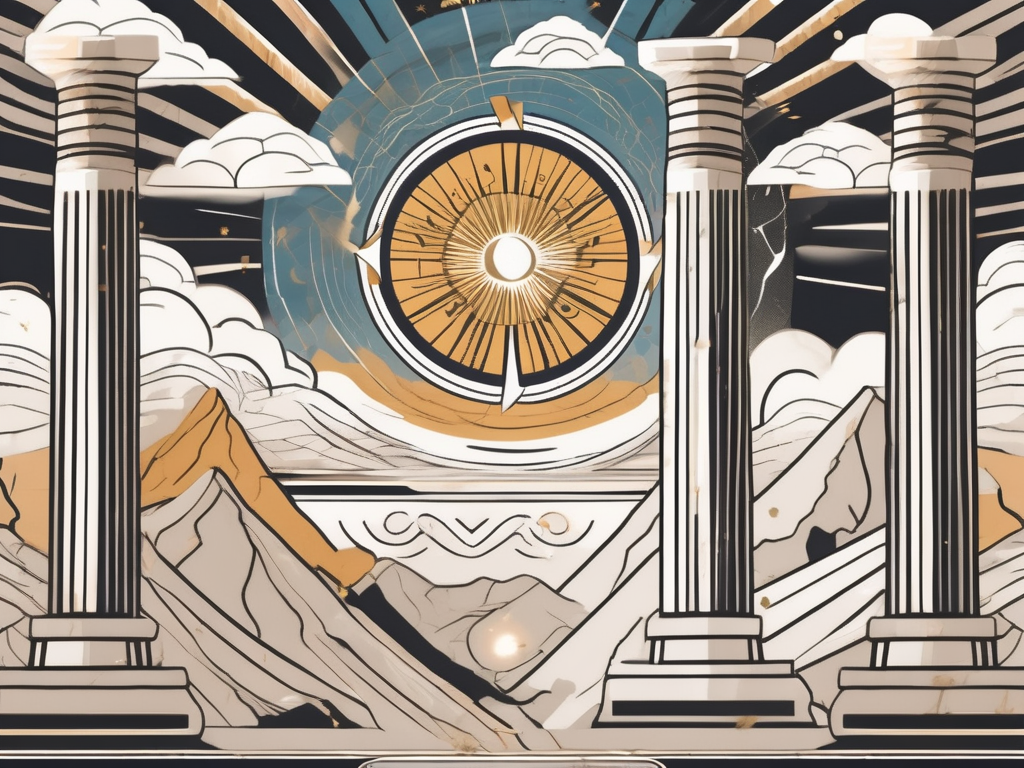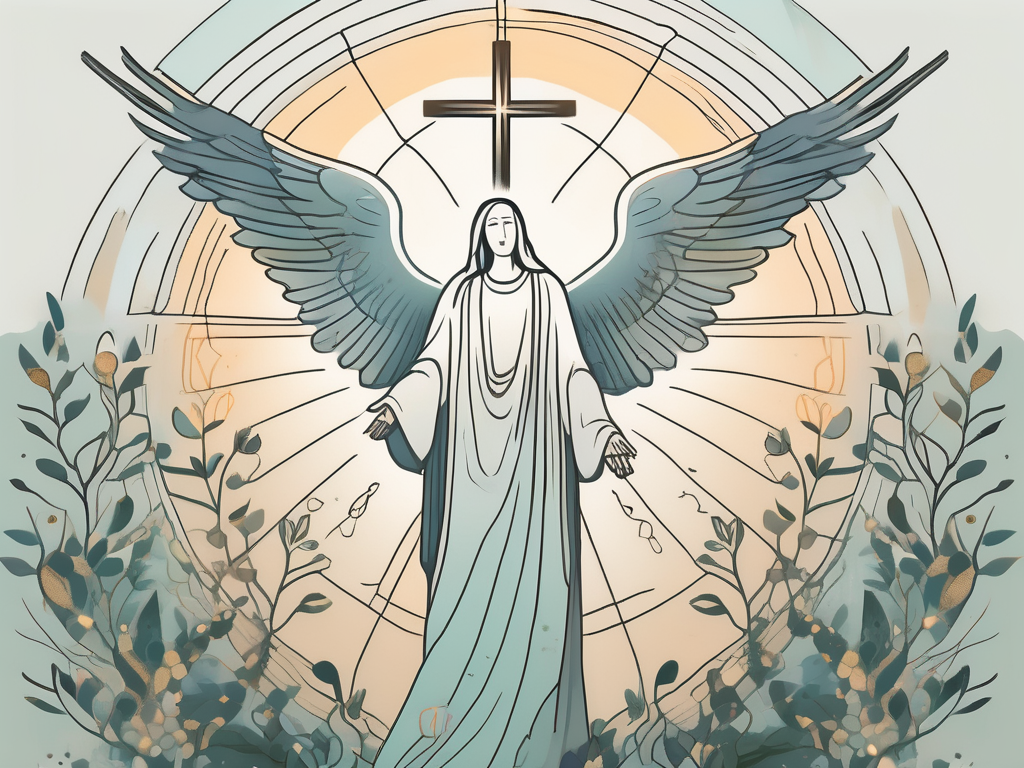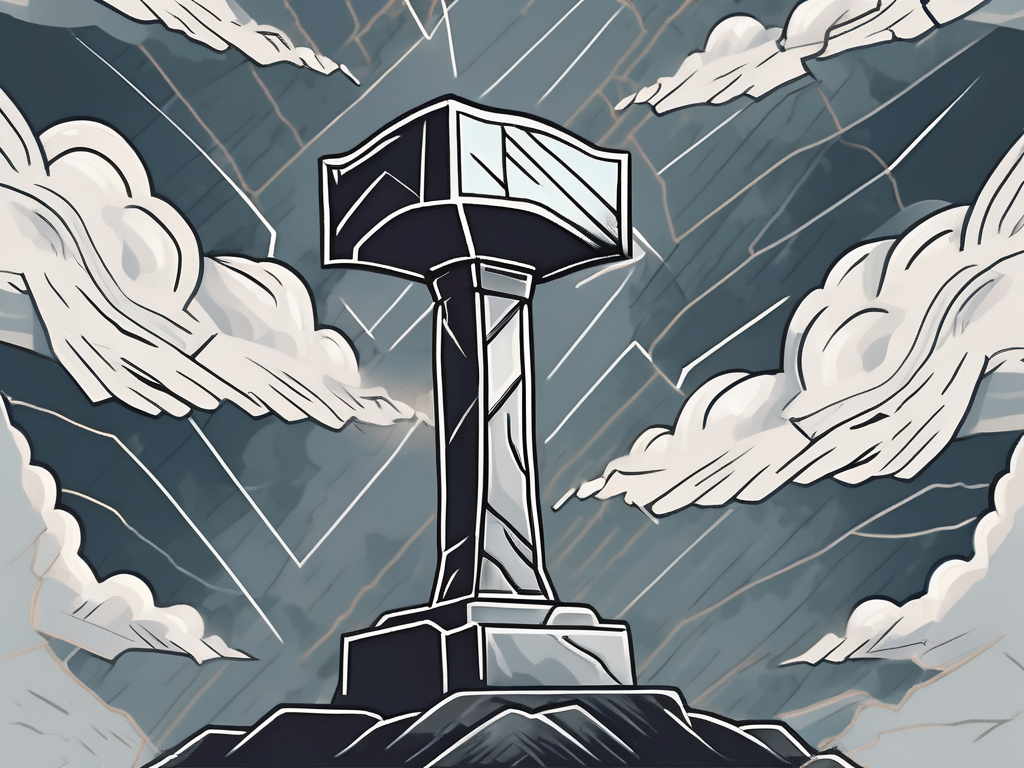In ancient Egyptian mythology, the God of Death played a vital role in their beliefs about the afterlife and the journey of the soul. While often depicted as a fearsome and intimidating deity, this god held significant power and had many responsibilities. Understanding the mysteries surrounding this god can provide us with fascinating insights into ancient Egyptian culture and beliefs. So, let’s dive deep into the underworld and unravel the secrets of the Egyptian God of Death.
Understanding the Role of the Egyptian God of Death
As one of the major gods in the Egyptian pantheon, the God of Death, also known as Anubis, held a crucial position in the mythological realm. But who exactly was this mysterious deity?
The identity of the Egyptian God of Death is a topic of great intrigue. While Anubis is the most well-known, it’s important to note that various gods were associated with death and the afterlife in different periods of Egyptian history. For the purpose of our exploration, we will primarily focus on Anubis, the jackal-headed deity closely associated with mummification and the protection of the dead.
Aside from mummification, the God of Death had many other responsibilities. These included guiding the deceased in their journey through the perilous underworld and weighing their hearts against the feather of Ma’at, the goddess of truth and justice. This ritual, known as the Weighing of the Heart, determined whether the soul would be allowed to enter the blissful realm of the afterlife or face eternal annihilation.
Anubis, with his jackal-like appearance, symbolized the wild and untamed nature of death. In ancient Egyptian beliefs, jackals were often seen scavenging near cemeteries and burial grounds, which led to their association with death. Anubis’ role as the God of Death was not only to oversee the process of mummification but also to protect the deceased from any harm that may befall them in the afterlife.
One of the most fascinating aspects of Anubis’ role was his involvement in the mummification process. Mummification was a complex and intricate procedure that aimed to preserve the body for eternity. Anubis played a vital role in this process by overseeing the embalming and wrapping of the deceased. It was believed that Anubis would ensure the proper preservation of the body, allowing the soul to recognize and reunite with it in the afterlife.
Furthermore, Anubis was also responsible for guiding the souls of the deceased through the treacherous journey in the underworld. This journey was fraught with dangers, including demons and various obstacles that the soul had to overcome. Anubis, with his knowledge of the underworld and his protective nature, would lead the souls safely to their final destination.
The Weighing of the Heart ceremony was a pivotal moment in the afterlife journey. During this ritual, the heart of the deceased was weighed against the feather of Ma’at. The heart represented the essence of the individual, while the feather symbolized the concept of truth and justice. If the heart was found to be lighter than the feather, it meant that the deceased had led a virtuous life and would be granted access to the eternal paradise of the afterlife. However, if the heart was heavier, it indicated a life filled with wrongdoing and the soul would face eternal punishment.
As the God of Death, Anubis held immense power and authority over the fate of the deceased. His role extended beyond mere judgment and punishment; he was also a compassionate deity who offered solace and protection to those who had passed on. Anubis’ presence in ancient Egyptian mythology highlights the significance placed on death and the afterlife in their culture, as well as the belief in the existence of a divine figure who governed these realms.
The Underworld in Ancient Egyptian Beliefs
To fully comprehend the role of the God of Death, we must first explore the ancient Egyptian concept of the afterlife and the journey of the soul through the underworld.
Ancient Egyptians believed in the existence of a complex and multifaceted afterlife. They envisioned the afterlife as a realm of eternal bliss, known as the Field of Reeds, where the deceased could enjoy an idyllic existence similar to their earthly life. In this paradise, the souls would be reunited with their loved ones and engage in activities they enjoyed during their time on Earth. The fields would be lush and abundant, with the gentle breeze carrying the scent of blooming lotus flowers.
However, reaching this paradise required navigating through the treacherous underworld, a challenging journey that was intimately tied to the God of Death. The underworld, known as Duat, was a vast and intricate realm filled with dangers and obstacles. It was believed to be a mirror image of the physical world, but with its own set of rules and supernatural beings.
The journey of the soul in the underworld was fraught with peril and obstacles. As the deceased embarked on their journey, they would encounter various guardians and undergo tests to prove their worthiness. These guardians took the form of fearsome creatures, such as the monstrous serpent Apep, who sought to devour the souls and prevent them from reaching their final destination.
One of the most significant challenges the deceased faced was the weighing of the heart ceremony. In this ritual, the heart of the deceased was placed on one side of a scale, while the feather of Ma’at, the goddess of truth and justice, was placed on the other. If the heart was found to be heavier than the feather, it meant that the deceased had led an immoral life and would be devoured by the fearsome Ammit, a creature with the head of a crocodile, the body of a lion, and the hindquarters of a hippopotamus.
These trials and tests were meant to ensure that only pure and virtuous souls could gain entrance to the afterlife. The journey through the underworld was not only a physical one but also a spiritual and moral one. It was believed that the deceased had to demonstrate their righteousness and adherence to Ma’at’s principles of truth, justice, and harmony.
Throughout this perilous journey, the God of Death, known as Osiris, played a crucial role. Osiris was not only the ruler of the underworld but also the judge who presided over the weighing of the heart ceremony. He was depicted as a mummified figure, symbolizing the cycle of life, death, and rebirth. Osiris was believed to have a deep understanding of the human condition and the struggles faced by the deceased. His role was to guide and protect the souls on their journey, ensuring that justice was served and the deserving souls could enter the Field of Reeds.
In conclusion, the ancient Egyptian concept of the afterlife and the journey through the underworld was a complex and intricate belief system. It involved navigating through a perilous realm, facing various tests, and ultimately being judged by the God of Death. The journey was not only physical but also spiritual and moral, with the goal of ensuring that only the purest and most virtuous souls could reach the eternal paradise of the Field of Reeds.
The Symbolism and Iconography of the God of Death
The Egyptian God of Death was intricately linked to powerful symbolism and iconography, which left a lasting impact on ancient Egyptian art and culture.
The depictions of the God of Death in art and hieroglyphs offer us a glimpse into the ancient Egyptian perception of this deity. Anubis is often portrayed as a jackal or a human figure with a jackal’s head, emphasizing his association with death and the animal’s role in the burial process.
Symbolism played a significant role in ancient Egyptian religious beliefs, and the God of Death was no exception. The scales used in the Weighing of the Heart ritual symbolized the balance between order and chaos, with the feather of Ma’at representing truth and justice.
Rituals and Practices Associated with the God of Death
The God of Death held a central place in various ancient Egyptian rituals and practices associated with death and the afterlife.
Funerary practices played a critical role in ancient Egypt, with mummification being one of the most well-known customs. Anubis, as the God of Death, was closely linked to this process and often invoked to aid and protect the deceased during the mummification process.
Furthermore, the God of Death had a prominent role in festivals and celebrations honoring the dead. The ancient Egyptians would hold elaborate ceremonies to honor their deceased ancestors and seek the favor and protection of the God of Death.
The Influence of the God of Death on Modern Culture
It is fascinating to see how the ancient Egyptian God of Death continues to captivate our imaginations and influence modern culture.
Literature and film have often drawn upon the mysteries and allure of ancient Egyptian mythology, with the God of Death making appearances in various works. From adventure novels exploring the secret tombs of undiscovered pharaohs to blockbuster movies featuring thrilling mummy curses, the influence of the God of Death on popular culture is undeniable.
Additionally, some contemporary beliefs and superstitions still hold remnants of ancient Egyptian mythology. The idea of the God of Death as a harbinger of doom or a guardian of the afterlife can be seen in certain modern spiritual practices and folklore.
In Conclusion
The Egyptian God of Death, be it Anubis or other deities associated with this role, played a significant part in ancient Egyptian beliefs about the afterlife and the journey of the soul. Through their rituals, iconography, and symbolism, the ancient Egyptians sought solace and guidance from this god, hoping to secure a place in the eternal paradise of the Field of Reeds. Today, their myths and rituals continue to captivate us, shedding light on a civilization that dared to explore the mysteries of life and death.












